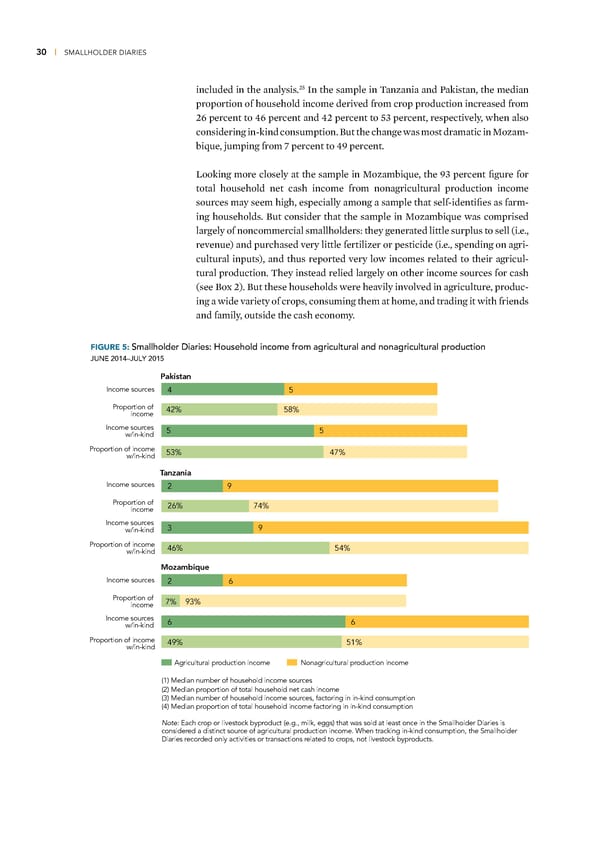30 | SMALLHOLDER DIARIES ‘” included in the analysis €n the sample in Œan—ania and aistan, the median proportion of household income derived from crop production increased from ‘¢ percent to “¢ percent and “‘ percent to ”Ÿ percent, respectively, when also considering in-ind consumption £ut the change was most dramatic in –o—am- biue, „umping from • percent to “ž percent ƒooing more closely at the sample in –o—ambiue, the žŸ percent figure for total household net cash income from nonagricultural production income sources may seem high, especially among a sample that self-identifies as farm- ing households £ut consider that the sample in –o—ambiue was comprised largely of noncommercial smallholders they generated little surplus to sell (ie, revenue) and purchased very little fertili—er or pesticide (ie, spending on agri- cultural inputs), and thus reported very low incomes related to their agricul- tural production Œhey instead relied largely on other income sources for cash (see £ox ‘) £ut these households were heavily involved in agriculture, produc- ing a wide variety of crops, consuming them at home, and trading it with friends and family, outside the cash economy FIGURE 5: Smallholder Diaries: Household income from agricultural and nonagricultural production JUNE 2014–JULY 2015 Pakistan Income sources 4 5 Proportion of 42% 58% income Income sources 5 5 w/in-kind Proportion of income 53% 47% w/in-kind Tanzania Income sources 2 9 Proportion of 26% 74% income Income sources 3 9 w/in-kind Proportion of income 46% 54% w/in-kind Mozambique Income sources 2 6 Proportion of 7% 93% income Income sources 6 6 w/in-kind Proportion of income 49% 51% w/in-kind Agricultural production income Nonagricultural production income (1) Median number of household income sources (2) Median proportion of total household net cash income (3) Median number of household income sources, factoring in in-kind consumption (4) Median proportion of total household income factoring in in-kind consumption Note: Each crop or livestock byproduct (e.g., milk, eggs) that was sold at least once in the Smallholder Diaries is considered a distinct source of agricultural production income. When tracking in-kind consumption, the Smallholder Diaries recorded only activities or transactions related to crops, not livestock byproducts.
 Financial Diaries with Smallholder Families Page 42 Page 44
Financial Diaries with Smallholder Families Page 42 Page 44